May 16 2017
Sunday – Wednesday: Starts in the double and steady state in the single
Sunday
The international youth regatta continued, but Romana and I had some time to get in the double after we had sent the girls quad off to their start. Of course we only had part of the lake to row, because we didn’t want to get too close to the racing action.
Coming Sunday, we’ll row our first Mix Masters 2x race of this year, and we haven’t really done starts practice. So that is what we did. I did the 4x250m mini session, doing the first and third 250m interval from standind starts. Wow, we have some work to. On starts, and also on the higher rate stuff.
Workout Summary - media/20170514-175645-Lenkas SpeedCoach 20170514 0854amo.csv
--|Total|-Total-|--Avg--|-Avg-|Avg-|-Avg-|-Max-|-Avg
--|Dist-|-Time--|-Pace--|-Pwr-|SPM-|-HR--|-HR--|-DPS
--|01000|03:41.0|01:51.0|000.0|32.8|160.0|178.0|08.2
W-|01000|03:42.0|01:51.1|000.0|32.8|160.0|178.0|08.2
R-|00000|00:00.0|00:00.0|000.0|00.0|000.0|178.0|00.0
Workout Details
#-|SDist|-Split-|-SPace-|-Pwr-|SPM-|AvgHR|MaxHR|DPS-
00|00250|00:57.1|01:54.2|000.0|31.1|147.6|167.0|08.4
01|00250|00:55.7|01:51.5|000.0|33.5|163.4|176.0|08.0
02|00250|00:53.6|01:47.2|000.0|34.0|159.4|174.0|08.2
03|00250|00:55.8|01:51.6|000.0|32.6|169.8|178.0|08.2
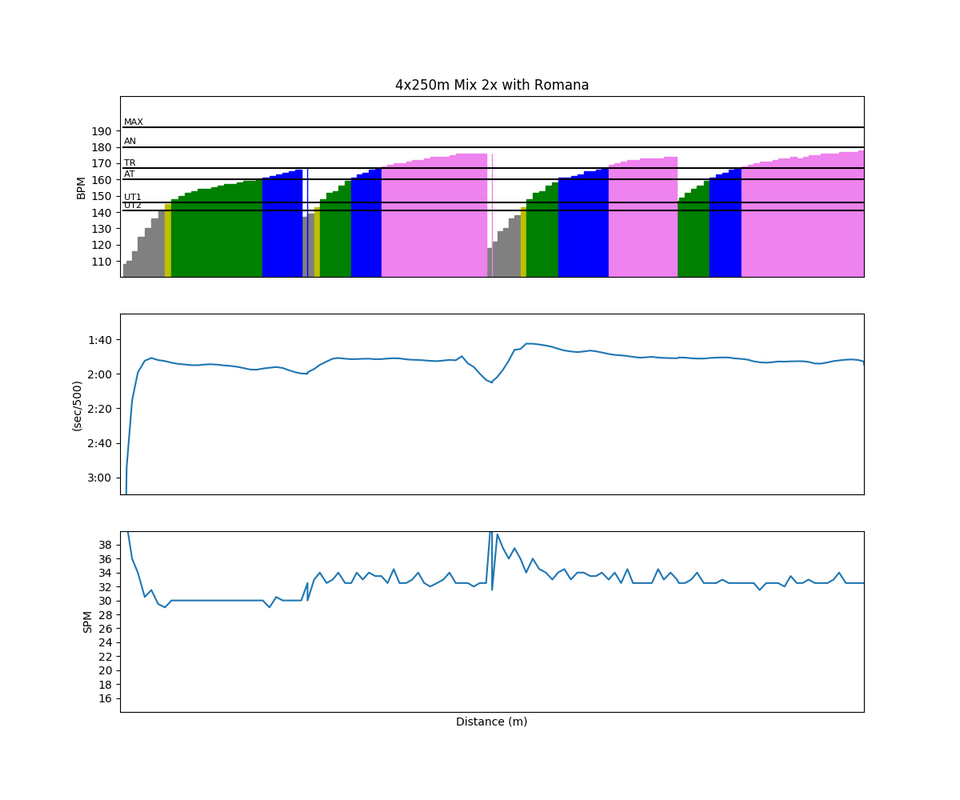
After the 250m intervals, we did a few more starts and then we positioned ourselves at the 1500m mark to watch the final 500m of the girls quad. They came in fourth place in the A final, kind of where we expected them to be.
After the short row, I did a 25 minutes run, and then I tried out the Stand-Up Paddle board for the first time. It was nice, but I didn’t fall in love with it.
Around lunch time the racing was stopped for an hour because of a thunderstorm threat. The threat didn’t materialize luckily but I was happy that it was monitored and the race organization managed clear communication around it. It’s not an easy decision to make and implementing a pause and getting everybody off the lake is not easy, but there really is no alternative. I have witnessed a few races where there was no weather plan, and it is not a nice feeling when wind gusts, rain and lightning start and you have crews on the water. Actually, it is quite scary.
Monday
Too busy to row. The only rowing related activity that I managed was registering a few starts at the 2017 World Rowing Masters Regatta (in Bled, Slovenia, in September). I have registered mix C 2x, C 1x and B 1x. I’d like to row one race in the double as well, but I am a bit unlucky with doubles partners this year, so I will wait a few more weeks before registering those.
On rowsandall.com, I launched some new functionality related to box charts. Team managers can now very easily see progress of key metrics for all their team members. I discussed box charts over on the Analytics blog. I got the idea for this after doing this blog post. The other thing that I implemented is making box plots by picking workouts from a searchable list, as opposed to doing it for all workouts in a date range. This enables you to select steady state rows only, for example.
Here is an example of the result, looking at Wash metric for the past few rows.
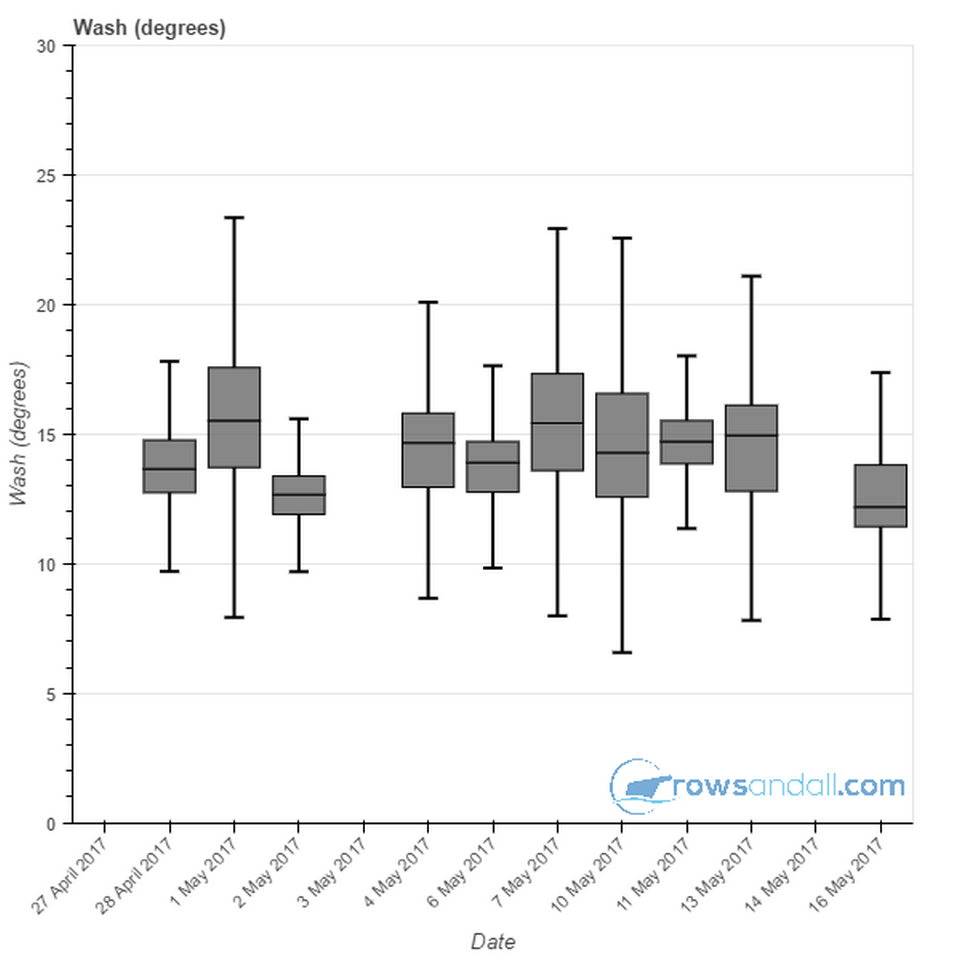
Tuesday
Look at that Wash plot above. The last box, that is today’s session. This morning, I did some steady state rowing in the single. I decided to head to the Castle, and the plan was to row 12km of the 14km row on the river. Unfortunately, I had to turn around just past the castle, because there were too many tree branches in the water after Sunday and Monday’s thunderstorms.
So what about Wash? I wanted to use this Steady State row to focus on Wash and record low values. I know some of you are asking why I focus on Wash so much when my values already compare quite well with the benchmark? The reason is that it is one of the few metrics where the stroke by stroke live feedback on the SpeedCoach tells me that I am sitting up tall and doing the back swing correctly. In good conditions, I can consciously row with a Wash value between 9 and 11 degrees. The trick is to continue to do this when I get tired or the water gets rougher. Here is the story of today:
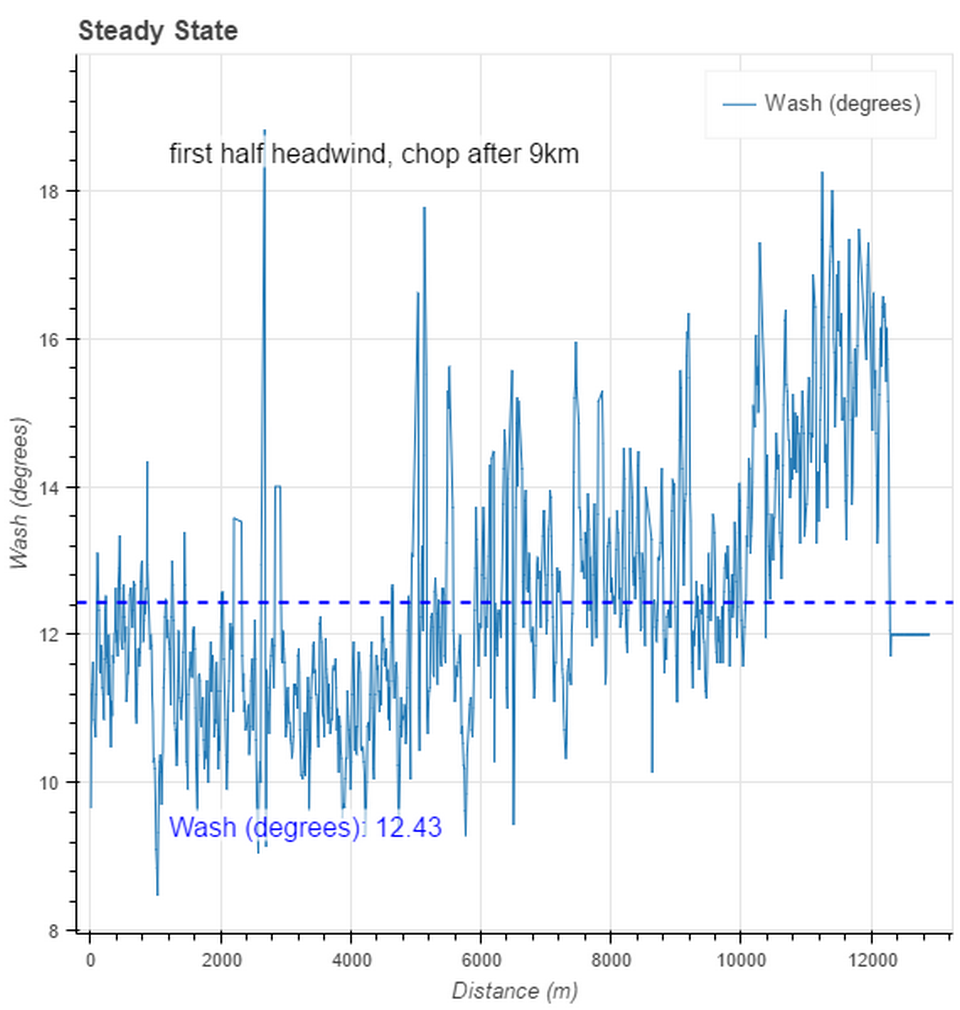
See how in the first 6km I manage to stay below 12 degrees for most of the time? This was helped by a slight headwind and super flat water. Because I had to turn early, I rowed the final 4km on the lake and the southern end of the lake was getting choppy. Rowing on a restless lake in tailwind, I suddenly found myself unable to produce those 11 degree and lower of Wash strokes. I am still happy that on the box plot it shows as one of the better rows, in terms of a low median, a small box and short whiskers compared to the other rows. It proves that you can focus and improve these metrics.
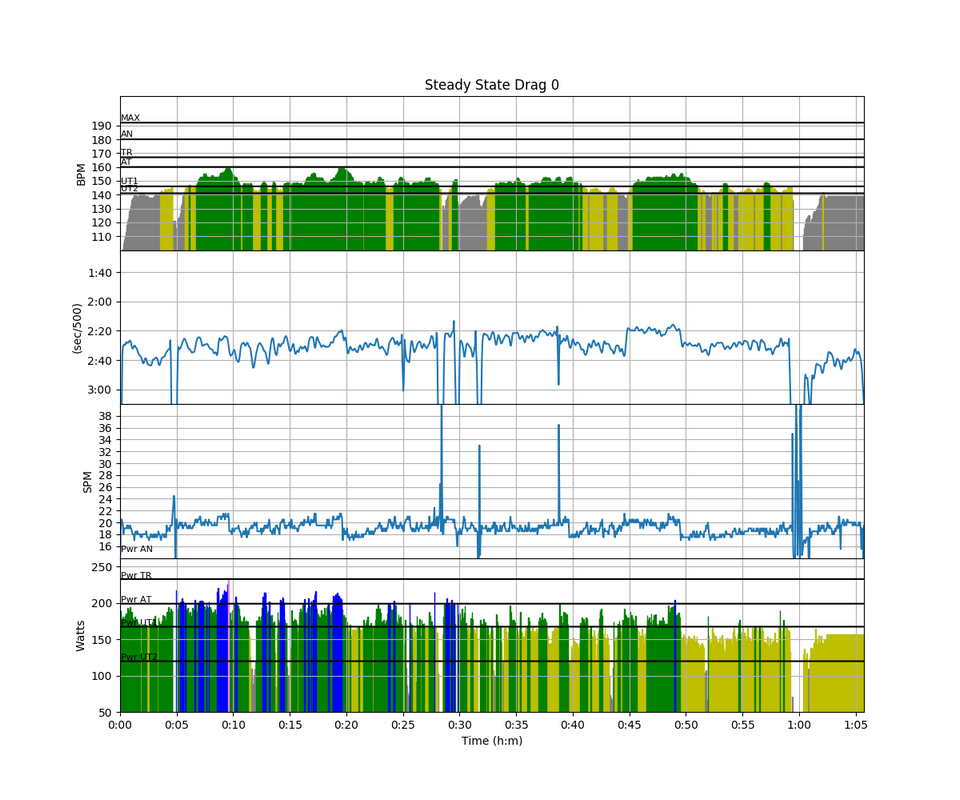
I wash pushing a bit harder than I should in the first half of the workout. You can see from power, work per stroke and average drive force how I paid for that. During the workout, the numbers got smaller and smaller.
The Empower Oarlock disconnected during the cooling down and I decided to not try and reset it, so the data are flat in the final 1km. Heart rate drift was 12%.
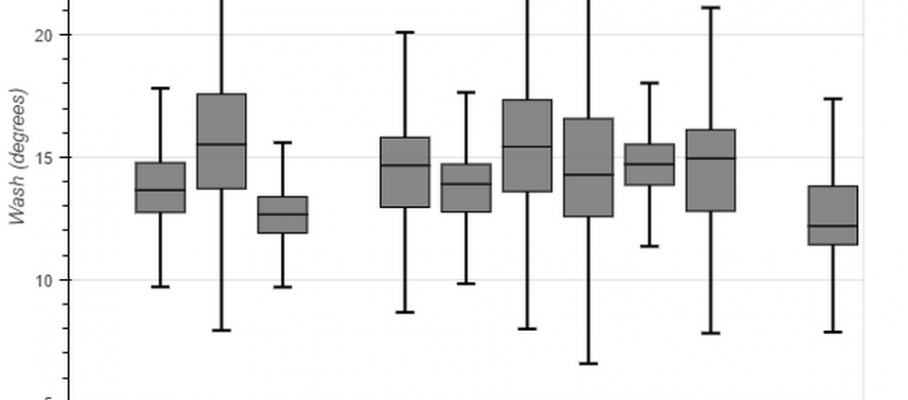
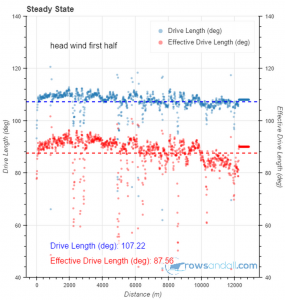
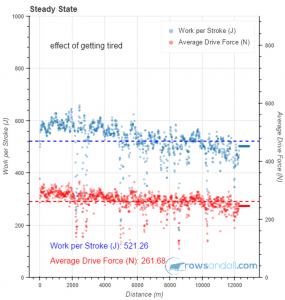
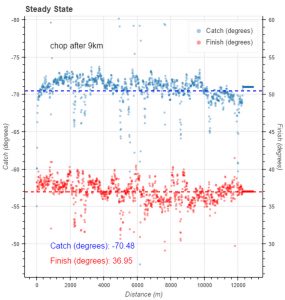
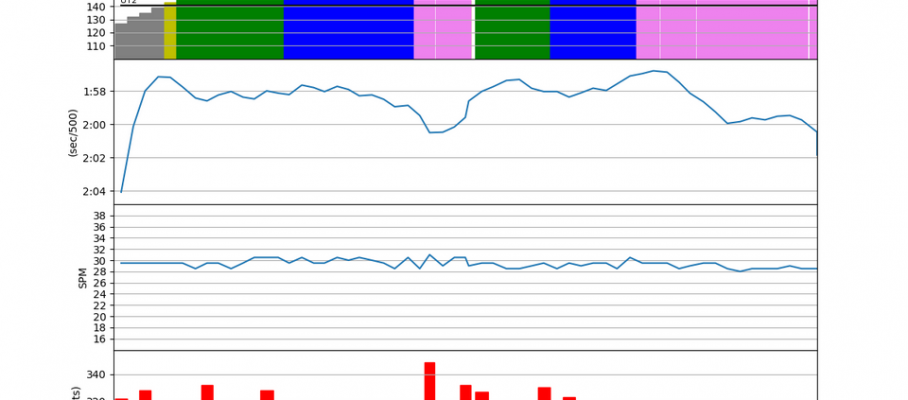
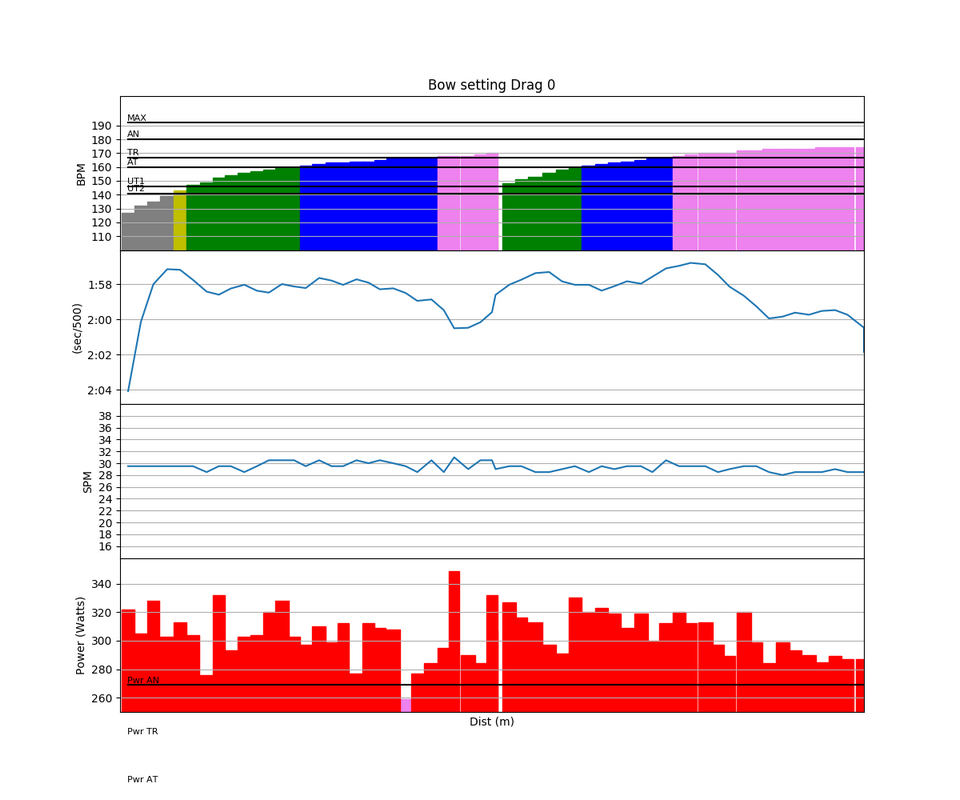
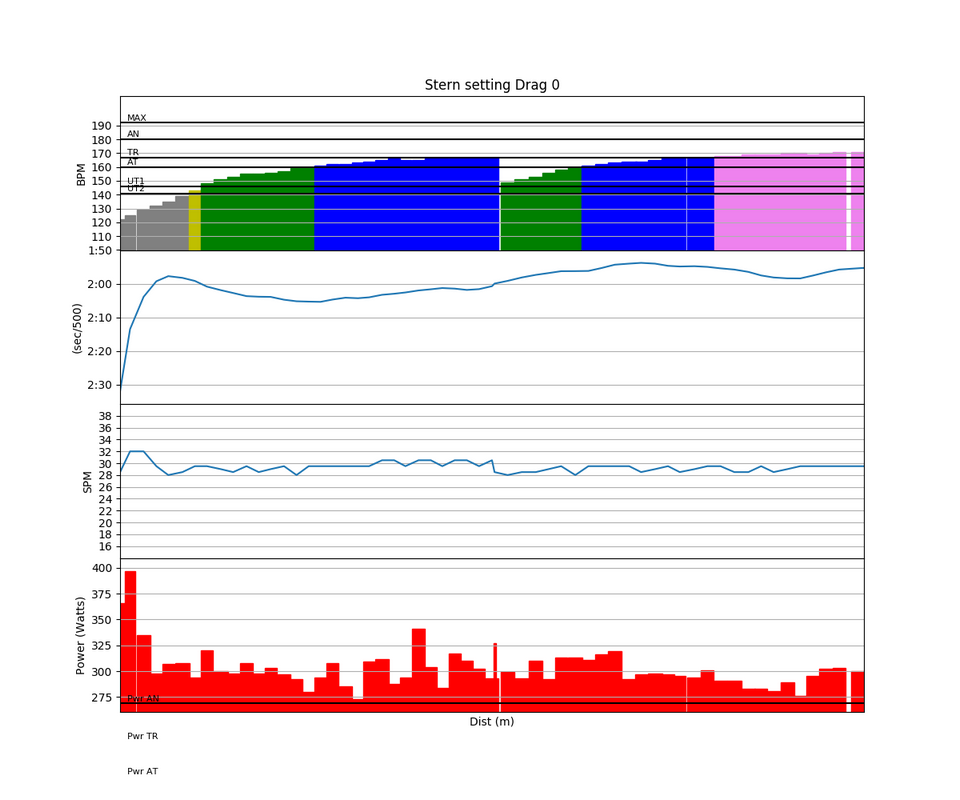
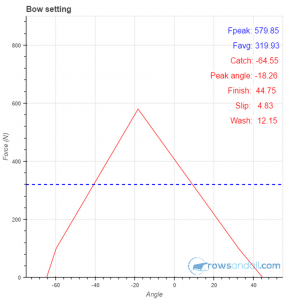
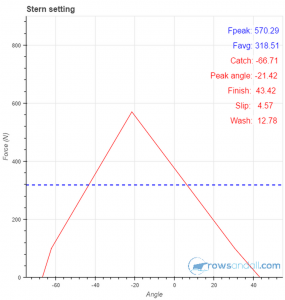
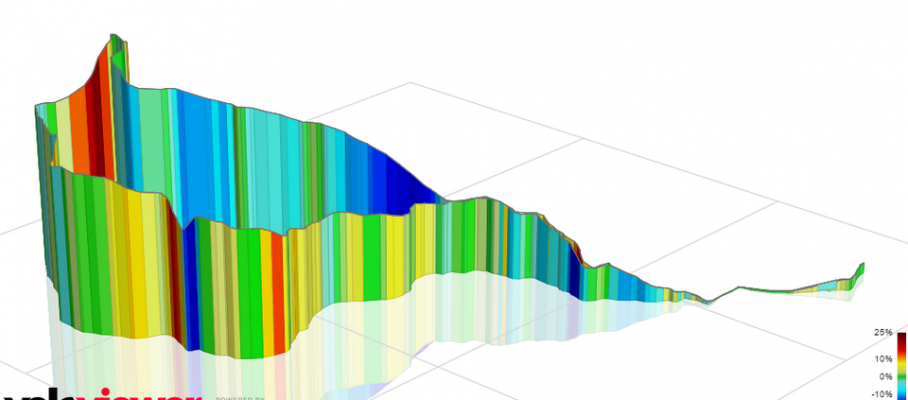
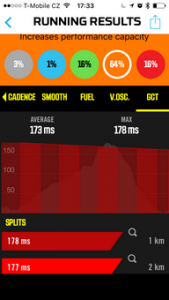

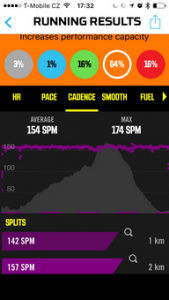
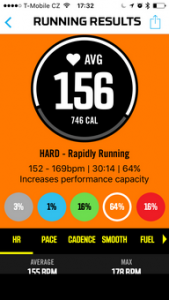
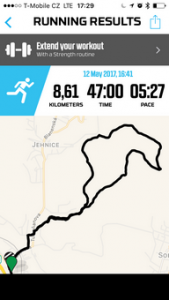
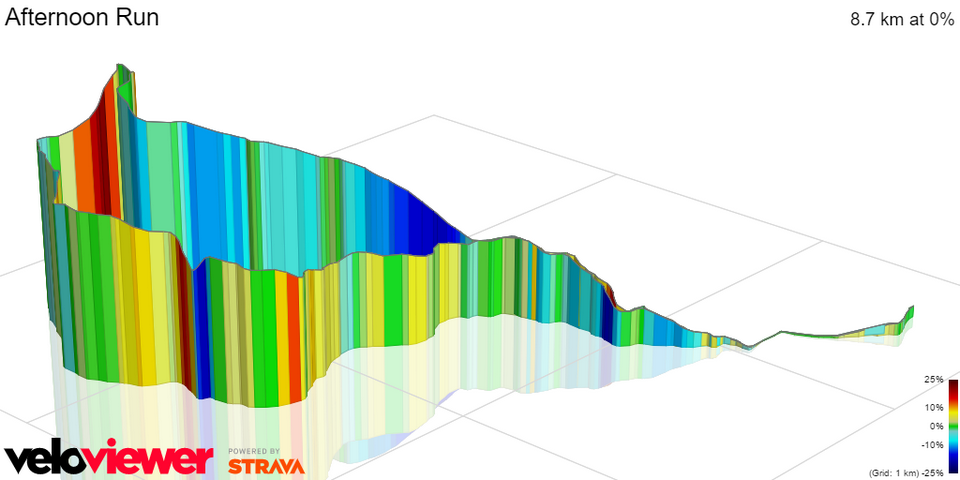
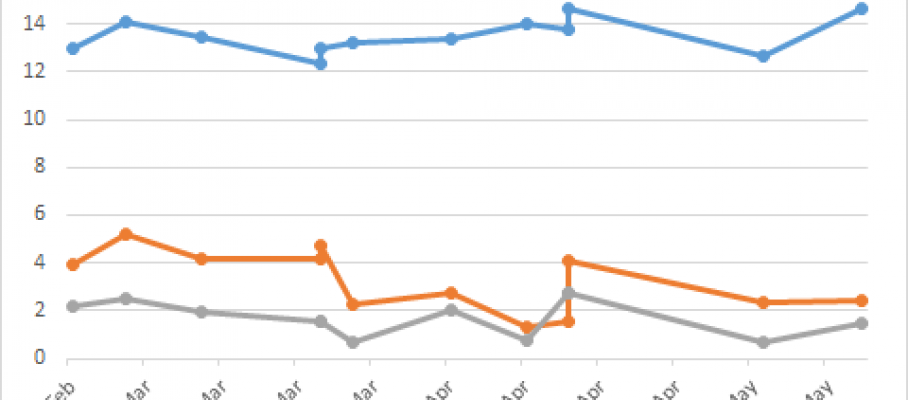
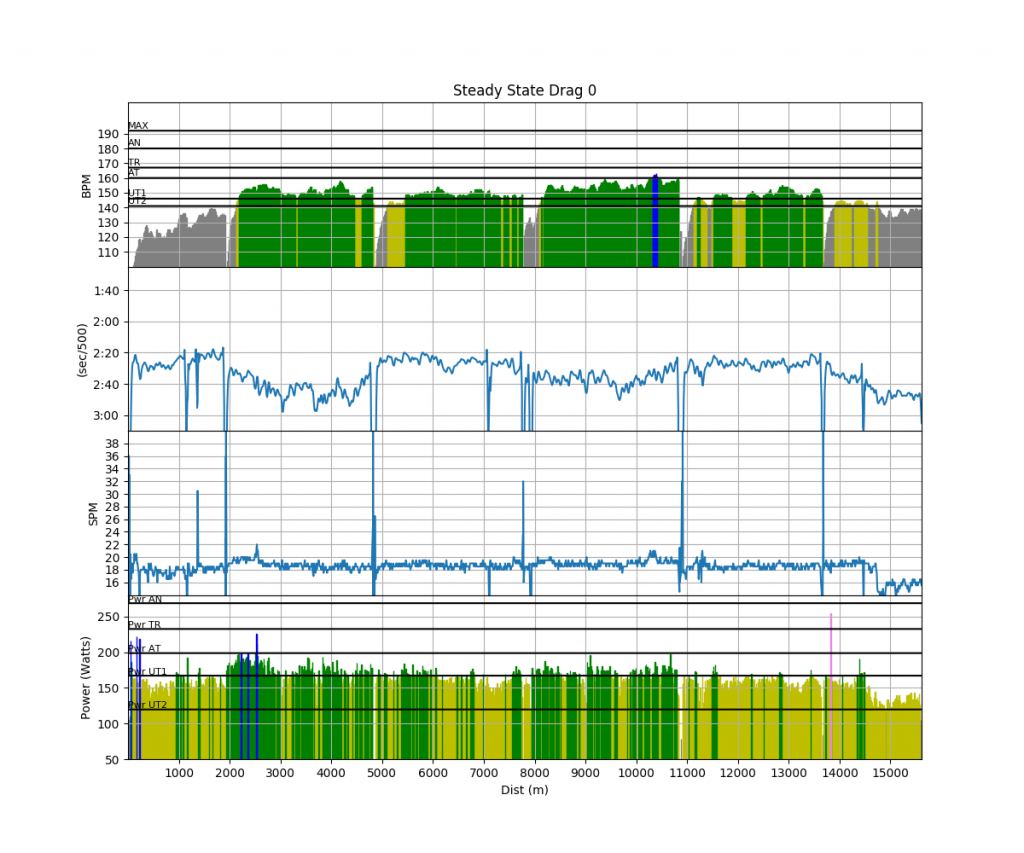
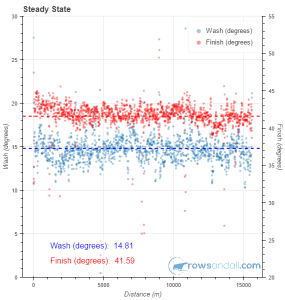
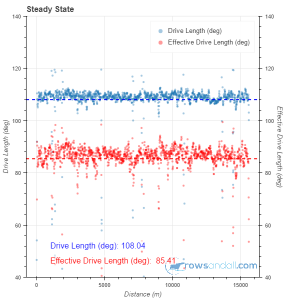
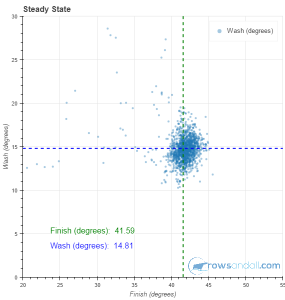
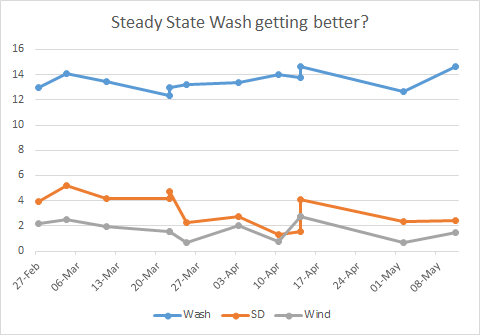
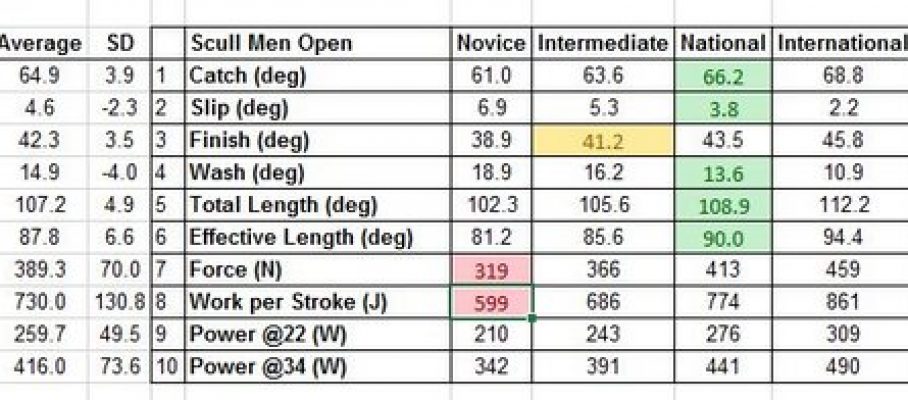
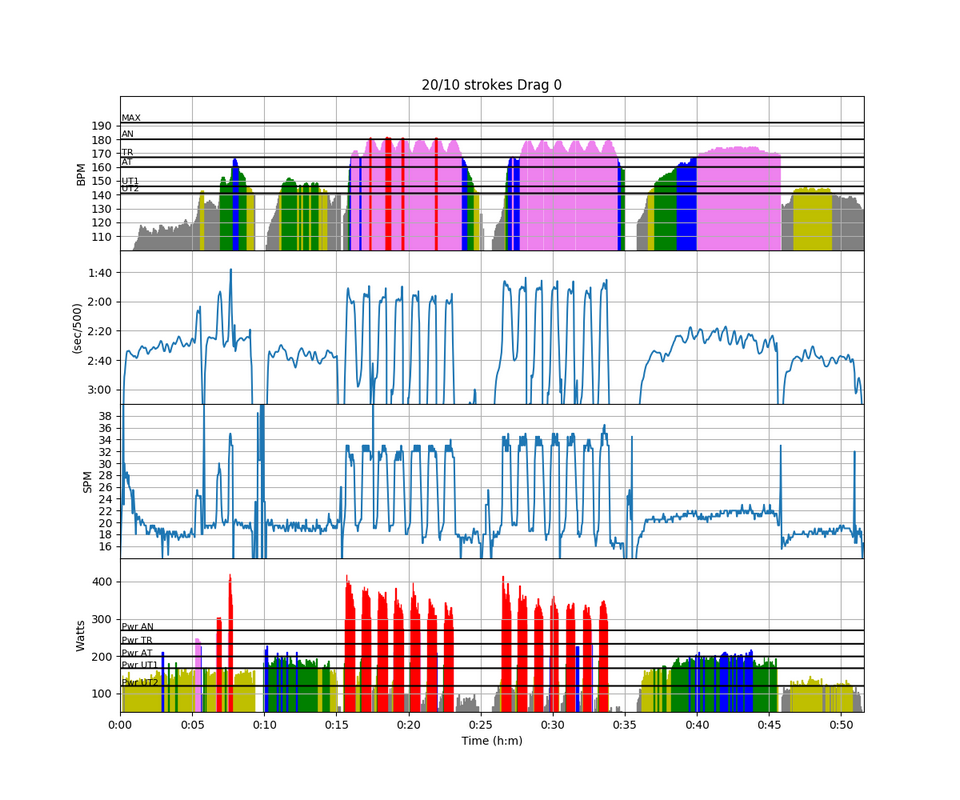
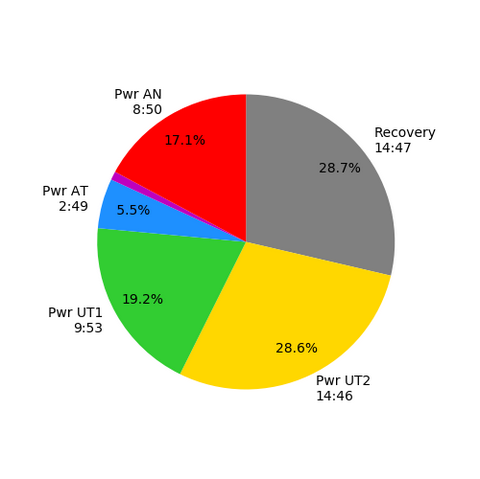
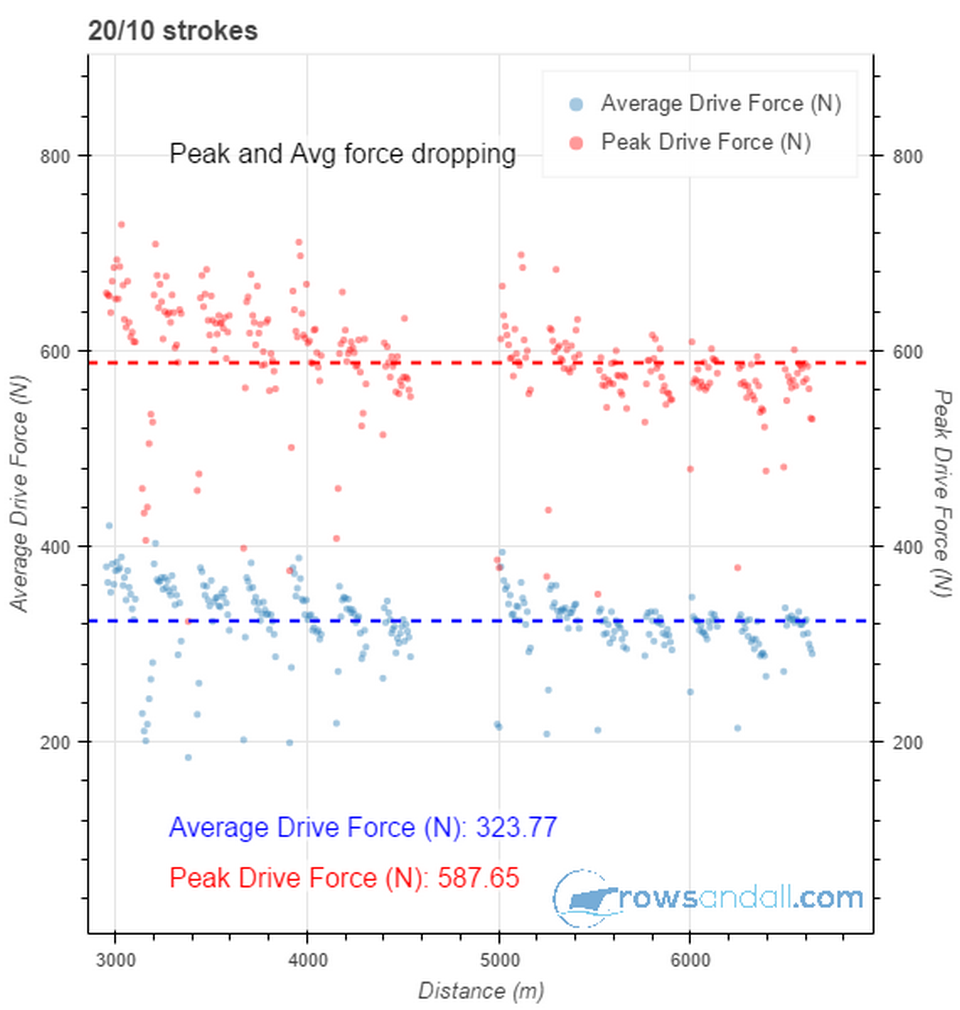
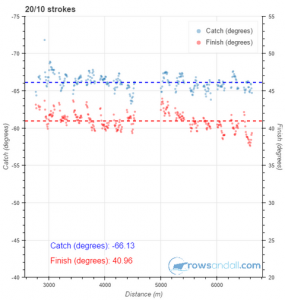
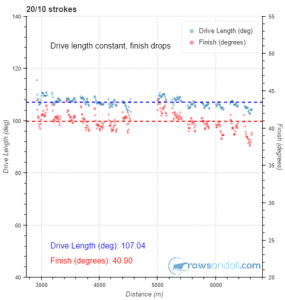
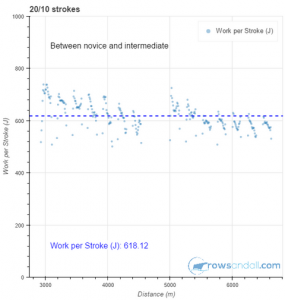
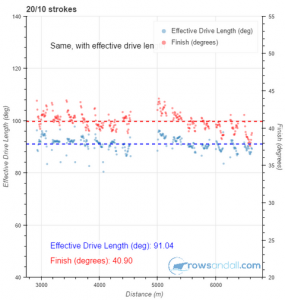
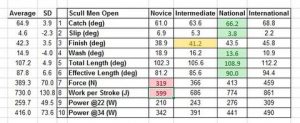
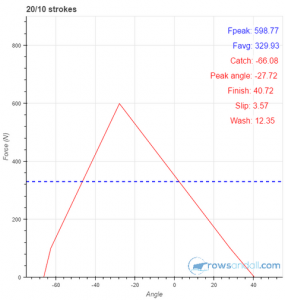

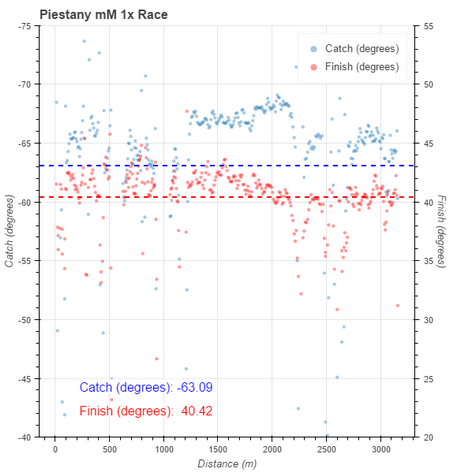
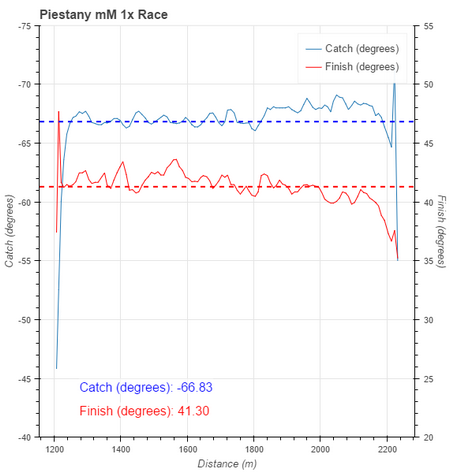
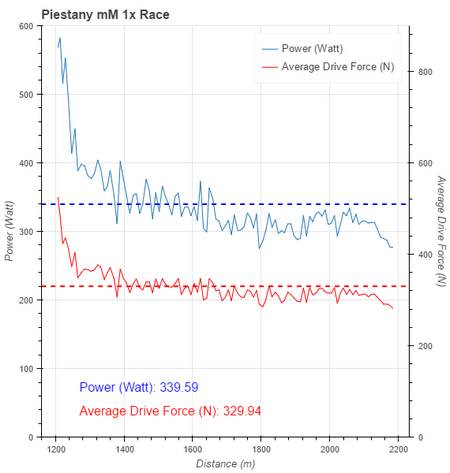
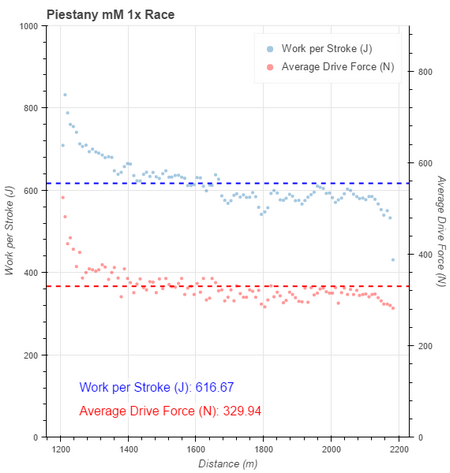

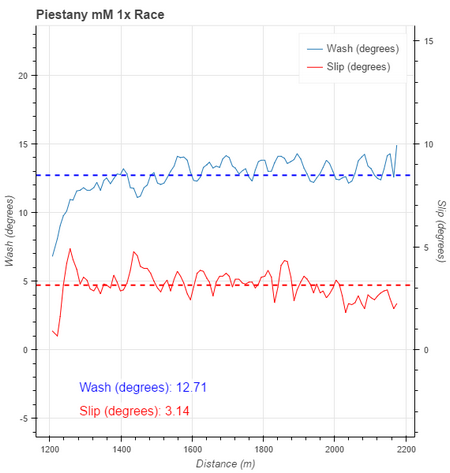
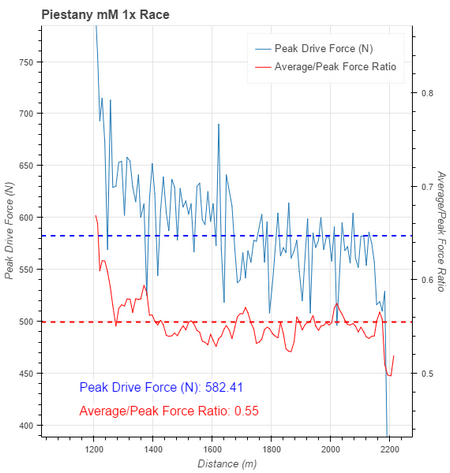
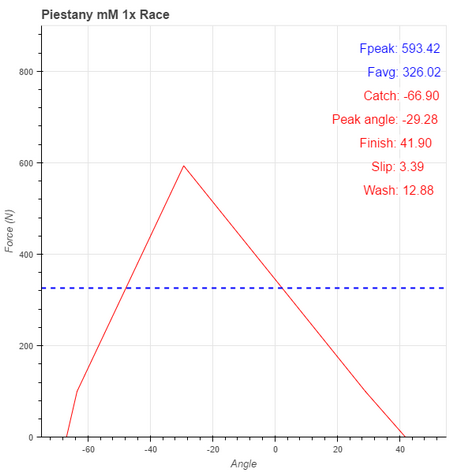
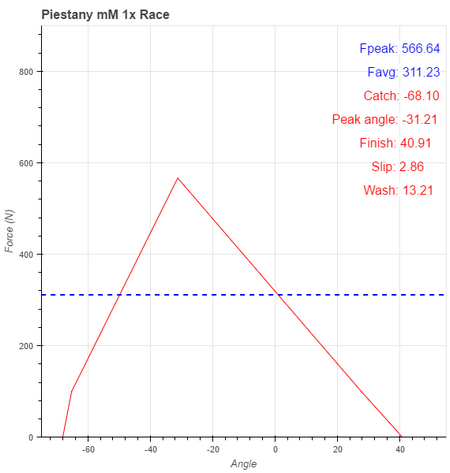
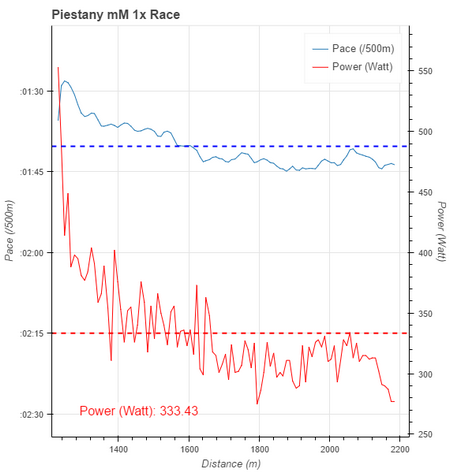
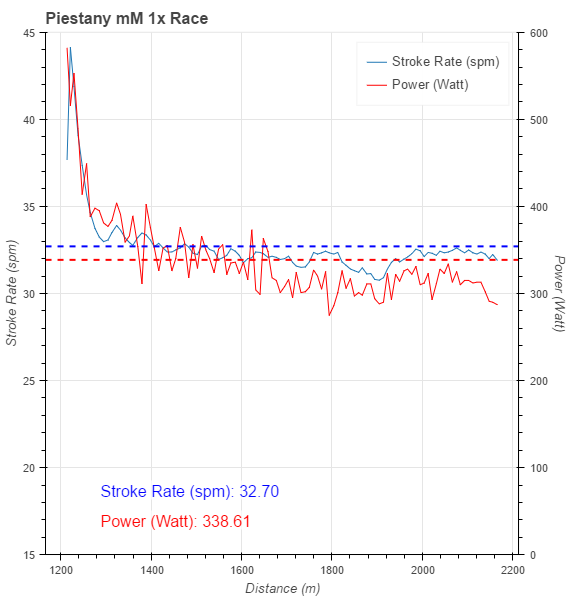
May 18 2017
An exercise in fading
Wednesday
I did a short outing in the double with a new rower. I heard about this new colleague who had been an excellent rower in the past. Talked to him and got him enthusiastic to try rowing again.
The caveat. He had a severe motorbike accident 8 years ago, has an arm and shoulder full of titanium, and has spent 100% of his energy on working since then. This was his first row since the accident.
It was a fun experience. The guy clearly knew what he was doing, but he will need a few rows to get back his former level of technique. Also, he was quite exhausted after just the warming up. I guess that calibrates my level of fitness. It’s a good reminder. Sometimes I think my fitness is dropping, but I guess I am always far from the absolute minimum.
By the way, it is my experience that base fitness comes back very quickly with bodies that have been exposed to intensive training when they were young. If you have such a body (which I do), congratulations!
Thursday
A morning row. I was supposed to take the bag with boat and scull covers to the club, because Romana wants to ride her bike this afternoon, and she would prepare the boats for transport to Hodonin, where we will be racing, coming weekend.
At 6am I am capable of getting up, getting my rowing bag and my work stuff, get a rudimentary breakfast in my stomach, and drive to the rowing club. At the last traffic light before the club, I realized I had forgotten the bag with boat covers. Oh well. Romana will just remove the riggers this afternoon, and I will have to come earlier to put the shells in the covers and load them on the trailer.
I forgot to read my training plan, so I headed over to the announcement board to read the Juniors/U23 training.
My training plan called for 6x250m/2′-3′ pause. The U23 training plan called for 4x start plus 15 strokes, plus 2x500m/500m, with the first 500m at 30spm, and the second one at 35spm.
I liked that. So, I did it.
The warming up plus a 2k with 4 practice starts followed by 15 strokes:
The end of the practice starts brought me to the finish line of the 2k course. I rowed back to the start, focusing on technique. So that brought me to 5k of distance covered.
Now it was time for the 500s. Here is the result:
The first 500m was performed well. The second one, I don’t know. I probably hit too high power values for this one, and I faded dramatically. Looking at the metrics charts below, I am not pleased with how the effective length drops in the second half of the second interval. It was really a dramatic exercise in fading.
Workout Summary - media/20170518-0735410o.csv
--|Total|-Total-|--Avg--|-Avg-|Avg-|-Avg-|-Max-|-Avg
--|Dist-|-Time--|-Pace--|-Pwr-|SPM-|-HR--|-HR--|-DPS
--|01500|06:28.0|02:09.5|245.8|27.1|165.0|186.0|08.6
W-|01000|03:46.0|01:53.5|328.3|31.9|177.4|186.0|08.3
R-|01000|05:06.0|02:33.4|150.3|21.4|150.7|186.0|00.0
Workout Details
#-|SDist|-Split-|-SPace-|-Pwr-|SPM-|AvgHR|MaxHR|DPS-
01|00500|01:55.8|01:55.8|312.2|29.9|175.5|182.0|08.7
02|00500|01:51.2|01:51.2|345.2|34.0|179.3|186.0|07.9
And a few charts with comments:
I also had fun looking at the lack of improvement in my metrics over the past weeks. No conclusions yet, except that it was fun to do it and I am glad rowsandall.com gives the opportunity to use this type of charts to monitor your athlete’s (lack of) progress. I filter away all strokes marked as “rest” and I also took the liberty to remove all strokes below 450 Joule per stroke, as they are either (unmarked) rest paddle, technique work, or short stroke exercises.
Tomorrow: Boat trailer loading. Boat trailer drive to Hodonin, then a mixed double row with Romana.
By sanderroosendaal • Uncategorized • 2 • Tags: ANC, ANC training, OTW, race prep, rowing, training